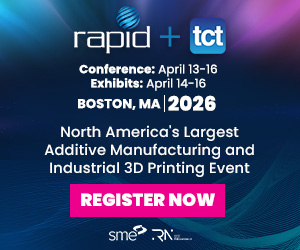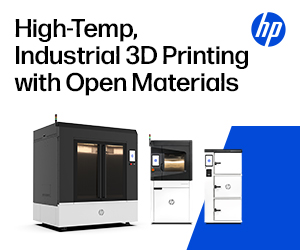Specialized methods, like two-photon polymerization (2PP), are a powerful technology to fabricate 3D micro and nanostructures, with applications in quantum technology innovation, 3D printed micro-optics, microfluidic devices, biomedicine, electronics, communications and more. Companies like Nanoscribe are leveraging the power of 2PP for medical devices and more, and many scientists are looking into 2PP for different applications, like Alexander Nguyen, a biomedical engineer working with 2PP at the Joint Department of Biomedical Engineering of the University of North Carolina and North Carolina State University who has been looking into the benefits and challenges of using 2PP for biological applications. In his paper “Two-photon polymerization for biological applications”, he describes 2PP as a unique tool to perform additive manufacturing for biological applications since structures of arbitrary geometry on the size scale of the cell or of sub-cellular structures can be reliably reproduced. Additionally, he explains that 2PP utilizes the two-photon absorption of near-infrared (NIR) light to excite the same energy transition as ultraviolet (UV) photons. 3DPrint.com reached out to Nguyen to learn more about the use of 2PP for biological and biomedical applications.
How is 2PP ideal for biomedical applications?
“There are many research questions that require sub-micron resolution to investigate which would be otherwise impossible to make with other 3D printing techniques. For example, the first projects I worked on involved tissue engineering blood vessels and capillaries. There has been a lot of press in the past about 3D printing full organs but anything thicker than a piece of paper would be impossible unless you have vessels to transport oxygen and nutrients to the cells. Since our capillaries are on the micron scale, other 3D printing technologies like extrusion bioprinting or even stereolithography would not be able to fabricate with enough resolution. The sub-micron resolution of 2PP puts us in the correct ballpark to attempt this challenge.
“We can always find applications to fit any tool so perhaps the real reason we started using 2PP for biomedical applications is that it’s easy to iterate designs. The term, ‘Rapid Prototyping’, seems to be going out of fashion for these technologies but I feel this is the strongest benefit of 3D printing. With my home FDM printer, I quickly made a CAD file for a detector mount and had it installed an hour later. In a similar fashion, anything in the appropriate size-scale for 2PP can be made quite easily with little opportunity cost. Recently, I was asked to make a model of a retinal rod cell; three hours later, I had something in hand. In a field where there is so much patient-to-patient variability, it’s important to have the flexibility to try new things.”
What advances can we expect in 2PP?
“Commercial 2PP systems based on the current technology exist but are quite expensive and are found in cleanrooms. Adding more components, such as a spatial light modulator or chirped pulse amplification, would increase performance, but also increase cost and decrease usability. In my opinion, advances in 2PP for biomedical applications would not involve improving 2PP itself, but rather integrating it with other systems to synergistically improve the process.”
Such as…?
“2PP promises great improvements in two main areas and is awaiting integration. We’ve already mentioned the high resolution of the process but to me, this is just an incremental improvement on laser-scanning stereolithography. What’s more exciting is the ability to draw within the bulk of the photopolymer, not just on the surface. 3D printing is often described as a ‘layer-by-layer’ process but this is not true with 2PP. When the Eiffel Tower was built, it would be quite silly to build it with a bunch of flat metal plates; it’s built with struts. Since the voxel in 2PP can move in any direction, imagine how quickly a model of the Eiffel Tower would be printed using a 3D scanning approach versus a layer-by-layer approach. Now merge this promise with an existing laser-scanning stereolithography process. Let’s say the UV laser fabricates the large, flat portions with a 10-micron layer height. 2PP could fill in the fine features or interpolate at the edges to remove the stair-case artifact anywhere within that 10-micron layer. This could be one method to achieve centimeter-scale structures with sub-micron resolution but this integration is easier said than done.”
Do you expect more researchers will seek to use this technology in the future?
“Achieving more generalized use does not require more arcane improvements to 2PP, but rather, creative engineers that are aware of the capabilities of this technology and can leverage it to its full effect rather than treating it as micro/nano-scale stereolithography. For this, the advancements should be improvements in usability, such as additional software and algorithms to break from the layer-by-layer approach, integration with other technologies to achieve new structure types (for instance, the combination of 2PP with microfluidics to achieve multi-material printing or 2PP and UV-stereolithography to greatly improve the resolution of large objects.)
“It’s the unfortunate state of the ‘publish or perish’ state of modern research that discovering something new is preferred over horizontal development of the technology or even replication of experiments. This results in scientific ‘silos’ where a research group is laser-focused on one technology and can sometimes overlook alternative solutions to a challenge. I consider that the main advancement 2PP needs is outreach, this means creating bridges between these silos to build a system that is greater than the sum of its parts. Finally, the biggest barrier that could be solved would be usability since these systems will need easy-to-understand control software. A growing area of need in this field of research is to develop robust software, so we could really use some expertise there.”
Have you been working on any new projects using 2PP recently?
“Commercial 2PP systems exist and are currently found in many universities but, to my knowledge, there are no medical devices made with 2PP on the market. Taking a further step back, there are very few implants made with photopolymers with the exception of those in the dental field. Since the polymers and photoinitiators used with 2PP can be toxic, my recent work has revolved around gauging the safety of photopolymers for use with embedded cells or tissues. I’m currently running studies investigating whether simultaneous light and photoinitiator exposure can cause gene mutations using in vitro assays.”
Join the discussion of this and other 3D printing topics at 3DPrintBoard.com.
Subscribe to Our Email Newsletter
Stay up-to-date on all the latest news from the 3D printing industry and receive information and offers from third party vendors.
Print Services
Upload your 3D Models and get them printed quickly and efficiently.
You May Also Like
How 3D Printing is Making the World a Better Place, One Medical Innovation at a Time
One of the most significant sectors for 3D printing applications is the healthcare field. According to an AM Research report, the 3D printed medical device market is estimated to reach...
3D Printing News Briefs, December 24, 2025: Investment, Acoustic Guitar, Toys for Tots, & More
In this Christmas Eve edition of 3D Printing News Briefs, we’re sharing joy and good news, starting with Nanoscribe’s exciting machine milestone! Moving on, New York’s governor is investing $32...
Velo3D’s $32.6M Defense Contract Highlights Why U.S.-Made 3D Printing Is Suddenly Critical
When the U.S. government talks about supply chain security, it’s no longer theoretical. It’s now written directly into law and into defense contracts. That detail matters for Velo3D, which this...
3D Printing Used to Make Prototype Plasma Camera Measuring Charged Particles in Space
Space is a vacuum, we’ve all heard that before. But that doesn’t mean it’s completely empty, just that it has an extremely low amount of particles and matter. Stars emit...































